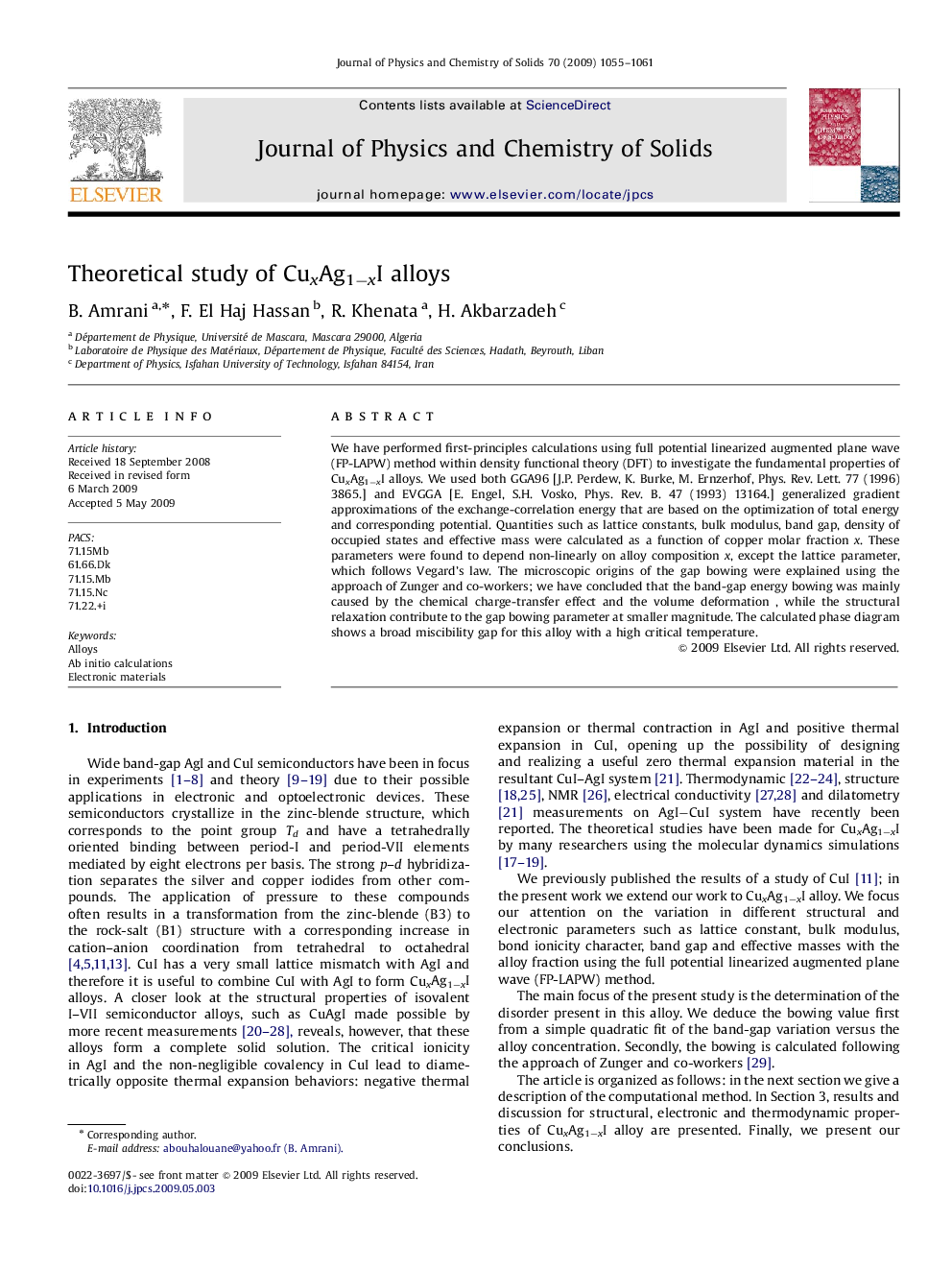| Article ID | Journal | Published Year | Pages | File Type |
|---|---|---|---|---|
| 1517751 | Journal of Physics and Chemistry of Solids | 2009 | 7 Pages |
Abstract
We have performed first-principles calculations using full potential linearized augmented plane wave (FP-LAPW) method within density functional theory (DFT) to investigate the fundamental properties of CuxAg1âxI alloys. We used both GGA96 [J.P. Perdew, K. Burke, M. Ernzerhof, Phys. Rev. Lett. 77 (1996) 3865.] and EVGGA [E. Engel, S.H. Vosko, Phys. Rev. B. 47 (1993) 13164.] generalized gradient approximations of the exchange-correlation energy that are based on the optimization of total energy and corresponding potential. Quantities such as lattice constants, bulk modulus, band gap, density of occupied states and effective mass were calculated as a function of copper molar fraction x. These parameters were found to depend non-linearly on alloy composition x, except the lattice parameter, which follows Vegard's law. The microscopic origins of the gap bowing were explained using the approach of Zunger and co-workers; we have concluded that the band-gap energy bowing was mainly caused by the chemical charge-transfer effect and the volume deformation , while the structural relaxation contribute to the gap bowing parameter at smaller magnitude. The calculated phase diagram shows a broad miscibility gap for this alloy with a high critical temperature.
Related Topics
Physical Sciences and Engineering
Materials Science
Electronic, Optical and Magnetic Materials
Authors
B. Amrani, F. El Haj Hassan, R. Khenata, H. Akbarzadeh,
